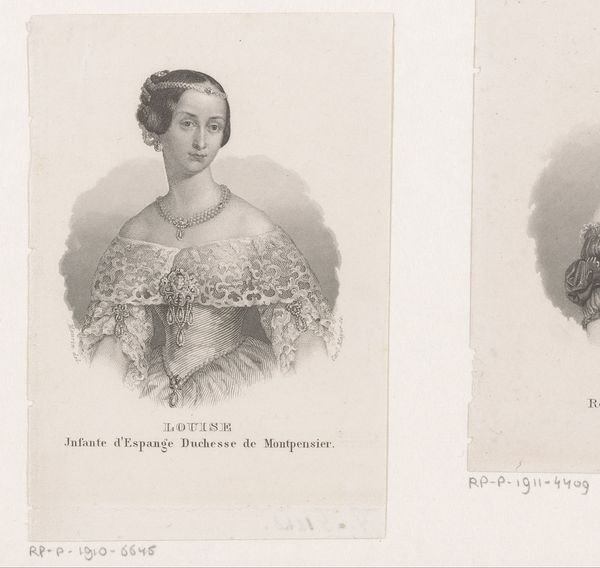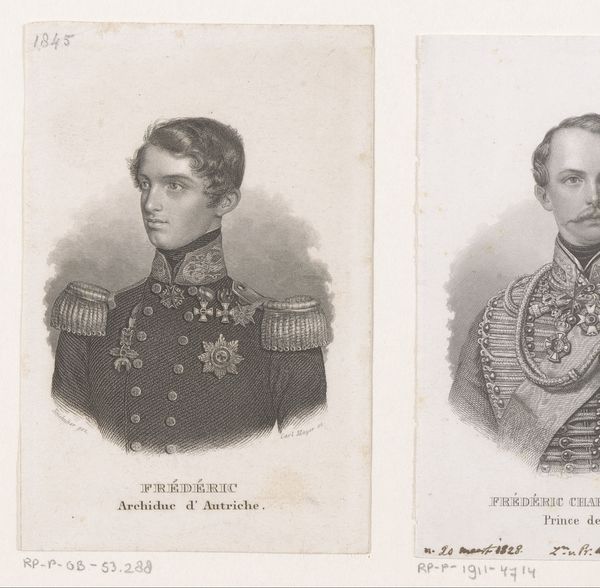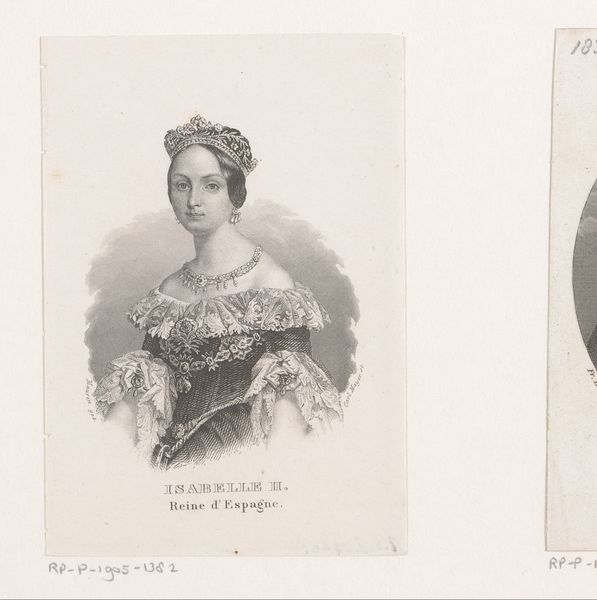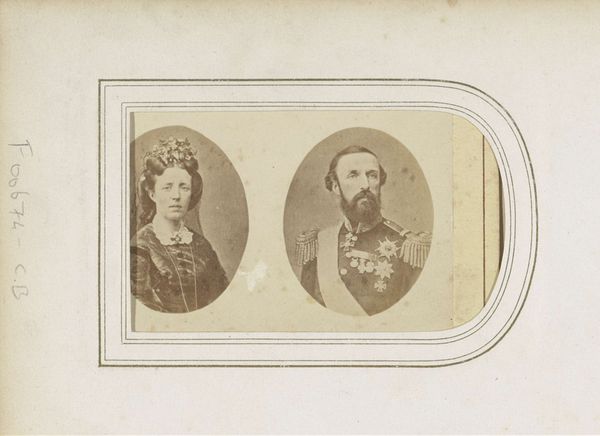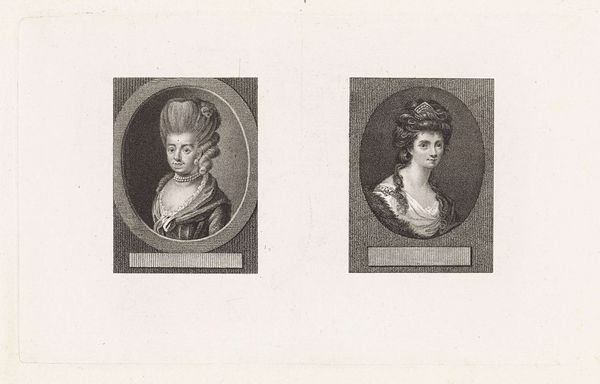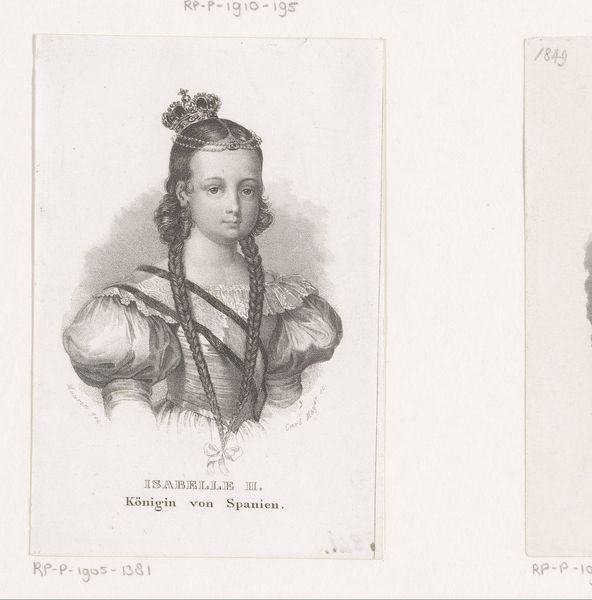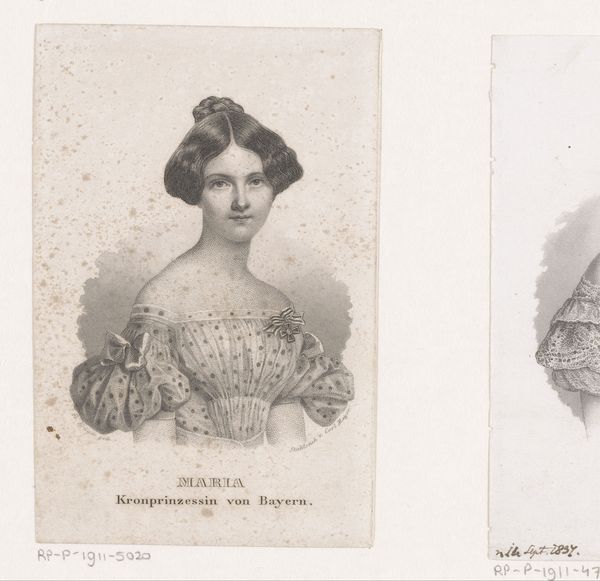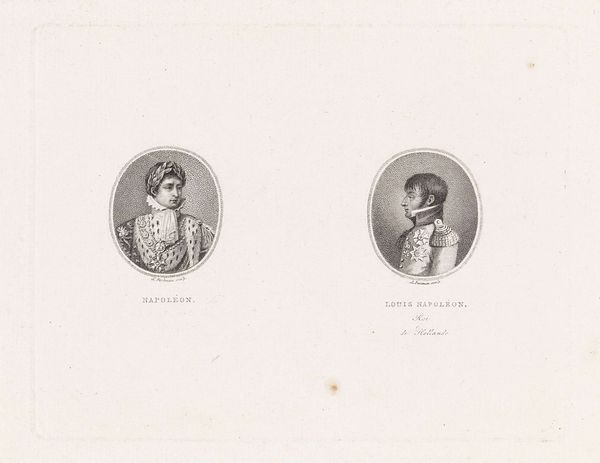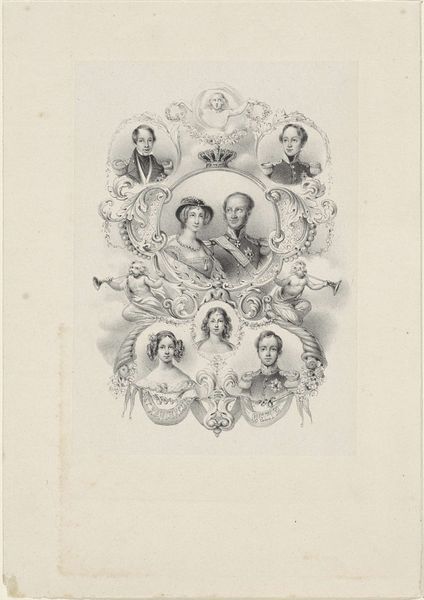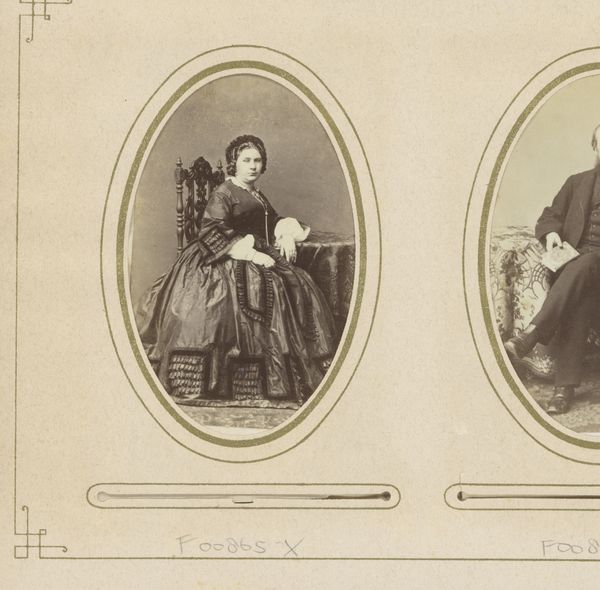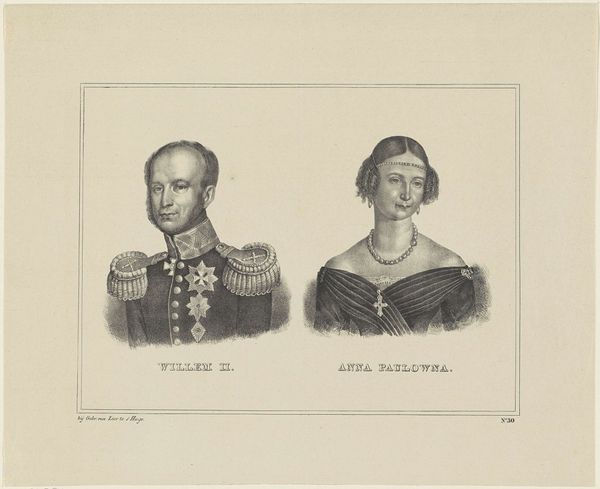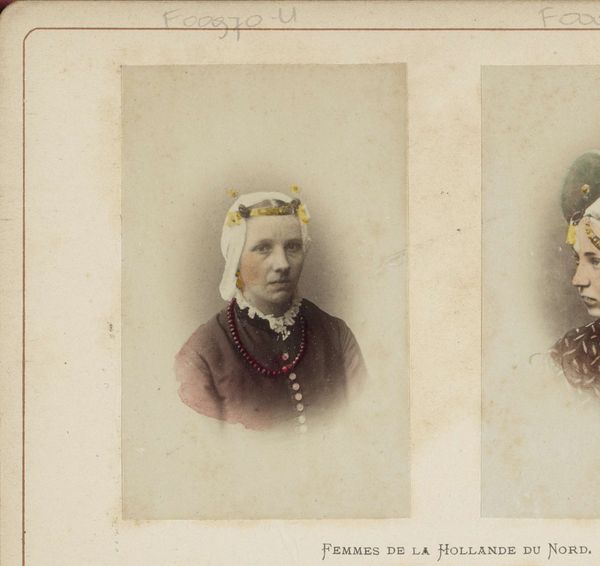
Portretten van Willem III, koning der Nederlanden, en Sophie van Württemberg 1839 - 1845
0:00
0:00
anonymous
Rijksmuseum
drawing, graphite
#
portrait
#
pencil drawn
#
drawing
#
neoclacissism
#
pencil sketch
#
charcoal drawing
#
pencil drawing
#
graphite
#
pencil work
#
genre-painting
#
graphite
#
realism
Dimensions: height 148 mm, width 192 mm
Copyright: Rijks Museum: Open Domain
Curator: Welcome to the Rijksmuseum. We’re standing before a double portrait created sometime between 1839 and 1845. The work, done in graphite, depicts Willem III, King of the Netherlands, and Sophie van Württemberg. It is, notably, by an anonymous hand. Editor: My immediate impression is one of…cool formality. They’re presented with such careful detachment. Almost like chess pieces positioned on a board, emblematic of roles rather than expressions of individual lives, constrained by societal expectations of the era. Curator: That cool detachment certainly mirrors the Neoclassical aesthetic then ascendant, emphasizing reason and order. But also note how the graphite, though a humble material, renders meticulous detail – the braiding on Willem’s military attire, the delicate ruffles of Sophie’s gown. These visual components, so integral to projecting power, all reinforce social roles and expectation, precisely. Editor: And the choice to render them so starkly, side-by-side, makes me wonder about the dynamics between the couple. Their narratives as individuals, but also their assigned function in perpetuating a monarchy. Curator: There is a kind of weight conferred by such rendering; a weight, if you will, of history. The almost architectural austerity suggests permanence. Their likeness rendered through meticulous, repeatable gestures; pattern upon pattern; visual order suggesting social order, even destiny. It’s as much about solidifying a certain kind of cultural memory. Editor: A memory built on carefully constructed performances. Think of Sophie, confined by expectations of dynastic duty, and gender. There's this implicit power struggle embodied in the picture. Curator: Absolutely, and yet despite the rigid formality, the artist captures subtle humanity. Look at the slight softening around Sophie's eyes, Willem’s brow furrowed in concentration— fleeting indicators of feeling that, for me, offset what may at first seem simply staid or prescribed. They echo. Editor: Perhaps. What truly haunts is precisely what remains unseen: those struggles within rigid social constraints, anxieties and limitations behind those portraits. They whisper across the ages. Curator: Yes, they certainly compel a deep historical gaze. Editor: They certainly provide an important access point, nonetheless.
Comments
No comments
Be the first to comment and join the conversation on the ultimate creative platform.
